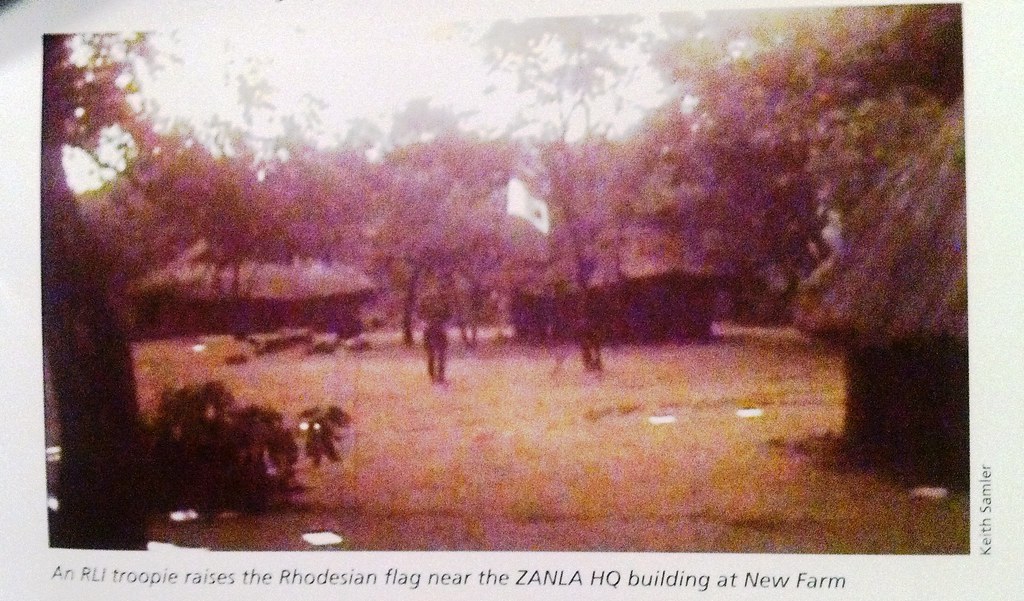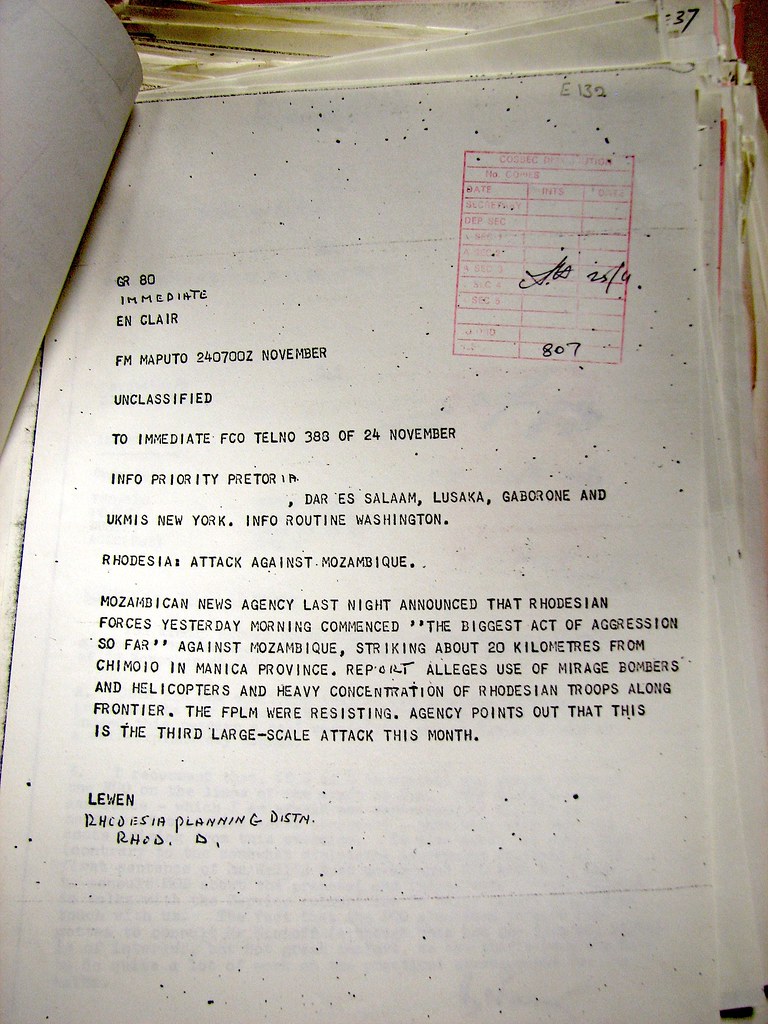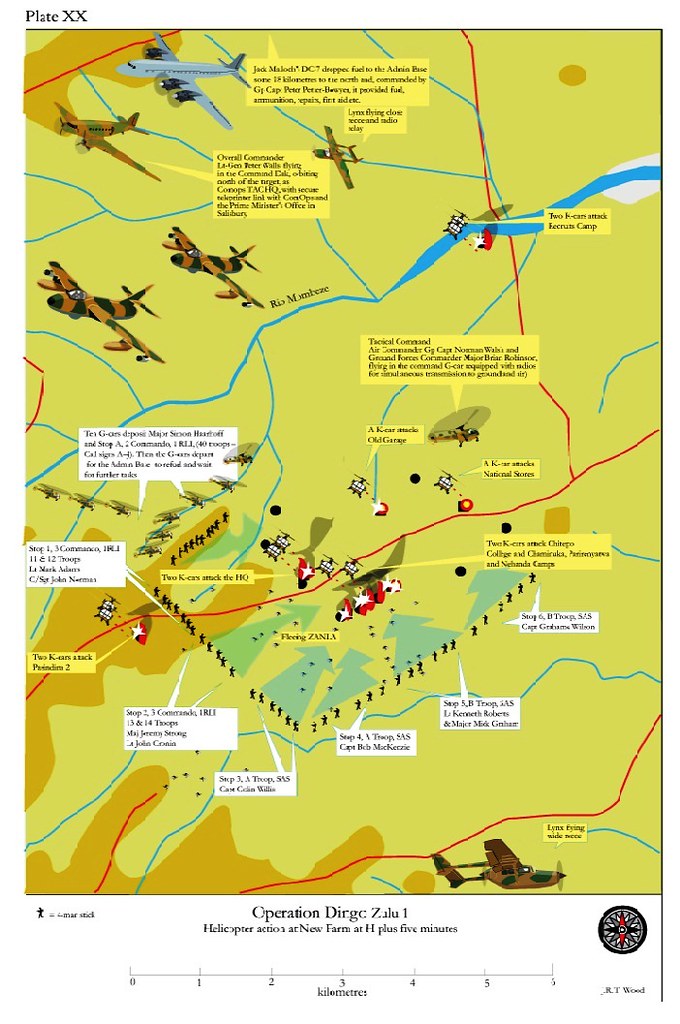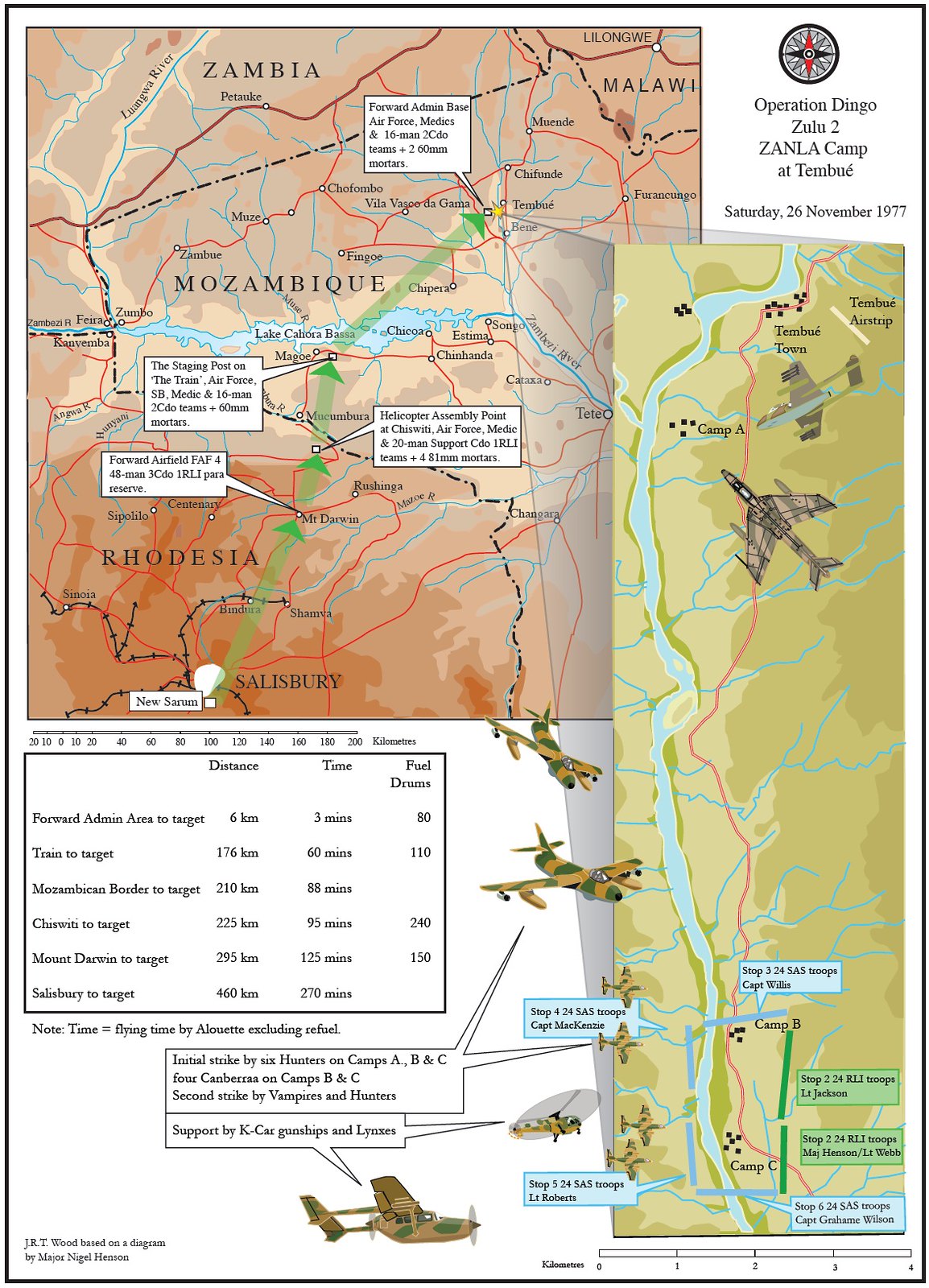Zulu 2 and the RLI
Deployment
The RLI played a significant part in Zulu 2. The 136 troops involved were committed as follows:
Assault: 48 troops ex Support Commando (Sp Cdo) in two para stops commanded overall by Major Henson with Lieutenants (Lts) Webb and Jackson as stop commanders.
Forward Admin Area: 16 protection troops supplied by 2 Commando (2Cdo) and parachuted into position together with 60 drums of fuel from a DC7.
On The Train: 16 troops commanded by Major Haaroff with 2 x 60mm mortars.
(The "Train" was a large isolated flat-topped feature which resembled a train when viewed in profile.)
Chiswiti: 20 Sp Cdo troops with 81mm mortars commanded by Captain (Capt) Buttenshaw. The RLI CCP was also positioned there.
Mt Darwin: 36 para reserve troops from 3Cdo at battle readiness.
D-Day: 26 November 1977
The day dawned clear across the northern part of Rhodesia, the route to the target, and the target itself. The short-term forecast was for later thunderstorms across the affected area in late afternoon and early evening. One concern had been removed from all commanders’ minds - weather would play no part in preventing the plan from proceeding.
Across the various staging posts/departure points, activity was frenetic. We now follow developments as they occurred:
0300-0500hrs
Corporal (Cpl) Jimmy Swan, 2Cdo (Forward Admin Area): “We were woken at New Sarum at about 0300hrs. We gulped down some coffee and kitted up. We carried CSPEP containers and boarded the DC7, the fuel and other supplies having been loaded earlier”.
At 0510hrs, ten Alouettes lifted off from Mt Darwin for The Train via Chiswiti, carrying 16 RLI and nine drums of fuel. At 0555hrs, eight K-Cars and the command helicopter left Mt Darwin for The Train to refuel before tackling the long trip to the target.
Meanwhile, back at New Sarum the 144 paras were kitting up. “There were 48 men from Sp Cdo”, recalls Second-Lieutenant (2Lt) Neill Jackson, “Stop One commanded by Mike Webb with Major Nigel Henson also in his stick, and Stop Two commanded by myself.”
Major Henson remembers a long (un-officer-like) walk to the DC3 and remarked upon boarding, “I saw the pilot Bruce Smith already wearing a parachute and remarked to him that there was no way he would beat me to the door!!”
The six para DC3s took off at 0625hrs and in the words of Neil Jackson, “We flew north at low level. The trip seemed to take hours (in reality 1hr 37mins) in bumpy conditions. Some men threw up, but for most of us it was just uncomfortable, being unable to relieve the pressure on aching limbs.”
Ten minutes later, the command heli and eight K-Cars arrived at The Train to be refuelled from the nine drums brought earlier. At 0700hrs, the DC7 with Corporal (Cpl) Jimmy Swan and 15 2Cdo, 2,500 K-Car shells and 80 drums of fuel (20 for The Train, 60 for the Forward Admin Area) departed New Sarum.
0715hrs - 12 G-Cars left The Train for the target area. 0720hrs six Hunters, four Canberras and four Vampires depart New Sarum for the target area. 0720-0758hrs - all the troops and aircraft now routing to the target.
0800-0900hrs - airstrike and drop.
0758hrs - 12 G-Cars arrive at the Forward Admin Area and the fuel and protection party drop from the DC7 called in. The drop into the Forward Admin Area became a nightmare for Jimmy Swan’s stick of protection troops. They were used to the sedate manners of the DC3, with a cruise speed of 160mph, a stall speed of 75mph and a normal paradrop speed of about 90mph. The DC7 was a different animal: it cruised at 359mph and whilst it stalled clean at 97mph, it could not be safely flown loaded with fuel and troops at less than 120-130mph. Even at this speed, the DC7 bucked, porpoised and groaned and its huge radial engines generated a slipstream that was almost lethal. 130mph became the new drop speed - 30 to 40mph faster than ever experienced before, but still within the safety limit of the T10 parachute which was 180mph.
As Jimmy Swan reflects, “We knew we were over the DZ area when we received the order – stand up, hook up and check equipment! We are packed in like sardines. ‘Go’ is given and seconds later there are paras everywhere - Jesus - we are in the trees, no time to jettison the containers. We have been dropped far too low, coming into a non-existent DZ at 16 feet per second. We plough in, weapons broken, bodies broken, some serious casualties.”
0800hrs - six Hunters attack Camp A, B and C (two on each) followed by four Canberras dropping 1,200 Alpha bombs on target B. Further strike by five Vampires put in on Camp A.
0803hrs - eight K-Cars and command heli into the orbit and receiving AA fire.
0804hrs – “We were dropped from 500’ AGL,” recalls Stop 2’s Neill Jackson. “Once my chute was open, I remember the awesome sights and sounds of the Hunters attacking, firing their cannon into the already burning camp area. As I floated gently to earth, I was relieved to see no fleeing enemy beneath and immediately upon landing, grouped into all-round defence and reported to the airborne commander that we were safely on the ground”.












Bookmarks